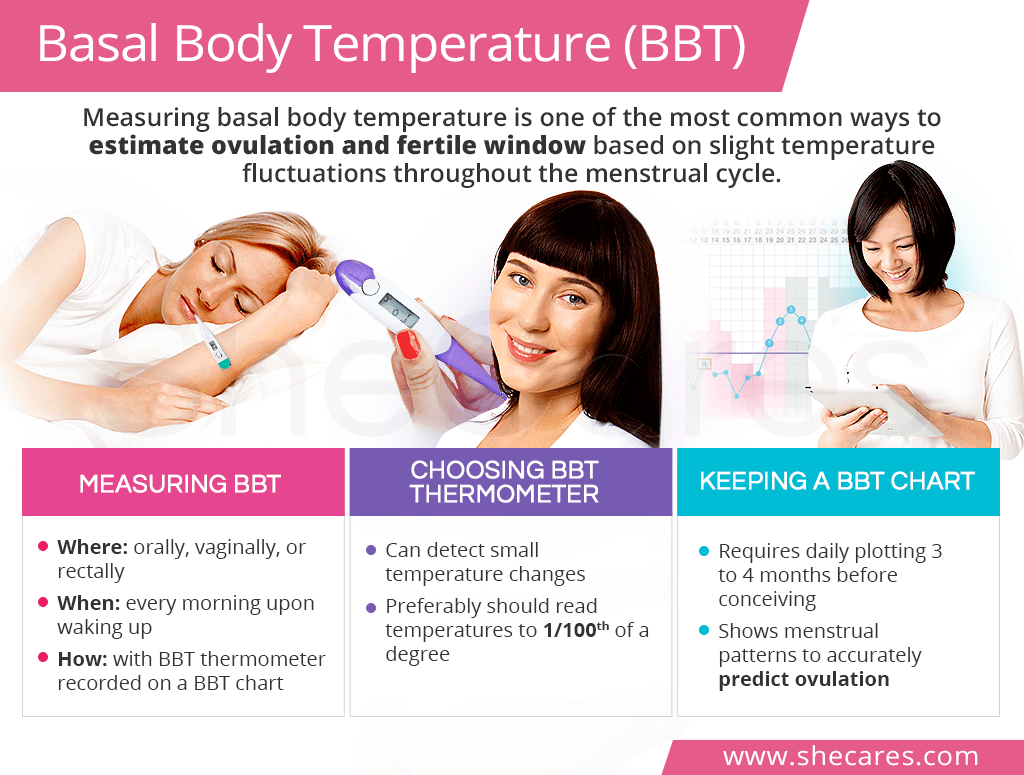What is Basal Body Temperature?
Basal body temperature (BBT) is the body temperature when fully at rest.
BBT follows roughly the same pattern from one menstrual cycle to another due to changing progesterone levels:
- Steady temperature ranging from 97 - 99 °F (36.1 - 37.2°C) from the first day of a period until ovulation (follicular phase)
- Slight dip on ovulation day
- Increased temperature by 0.4 - 1° F (0.2 - 0.5 °C) following ovulation until the next period (luteal phase)
Tracking that small rise in BBT is what helps women estimate their ovulation date, and, thus, the best time to have sex in order to conceive.
It is worth mentioning that a rise in BBT that continues for more than 18 days without a period might indicate pregnancy.
Measuring Basal Body Temperature
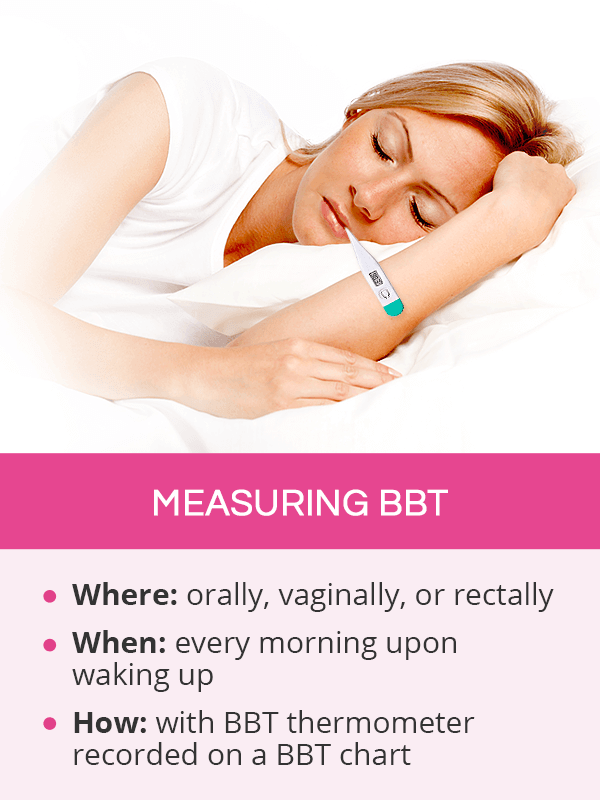
Although measuring BBT is simple, it requires a lots of diligence. To produce clear ovulation patterns, a woman has to measure BBT exactly the same way and time every day.
Where to Measure BBT
The most common method of checking BBT is orally under the tongue.
However, some women prefer taking their BBT in the vagina or rectum. Though both methods are valid, the rectal route is said to produce the most stable and accurate measurements.
It is important for women to select one method and continue with it throughout the entire process. If the vaginal or rectal method is preferred, it is crucial to sanitize the thermometer in between measurements.
When To Measure BBT
For accurate measurements, women are advised to start taking their BBT on Day 1 of their menstrual cycle, which is when a period starts, and continue daily for at least three to four months.
It should be the very first thing a woman does when she wakes up before getting up, talking, having sex, or using the bathroom.
It is best to keep the thermometer on a night stand within reach to make the morning routine as effortless as possible.
How to Measure BBT
Within a minute from waking up, a woman should put the ovulation thermometer under her tongue or in her vagina or rectum, keeping it there for five minutes or until it beeps, signaling that the measurements have been taken. Any additional movements, such as sitting or standing up, should be avoided as they might cause a rise in body heat.
Once the temperature is recorded, it should be properly noted on a BBT chart along with the time at which the measurements were taken.
BBT checking should be done after at least three or four hours of uninterrupted sleep. Otherwise, the results might not be accurate.
Choosing Basal Body Temperature Thermometer
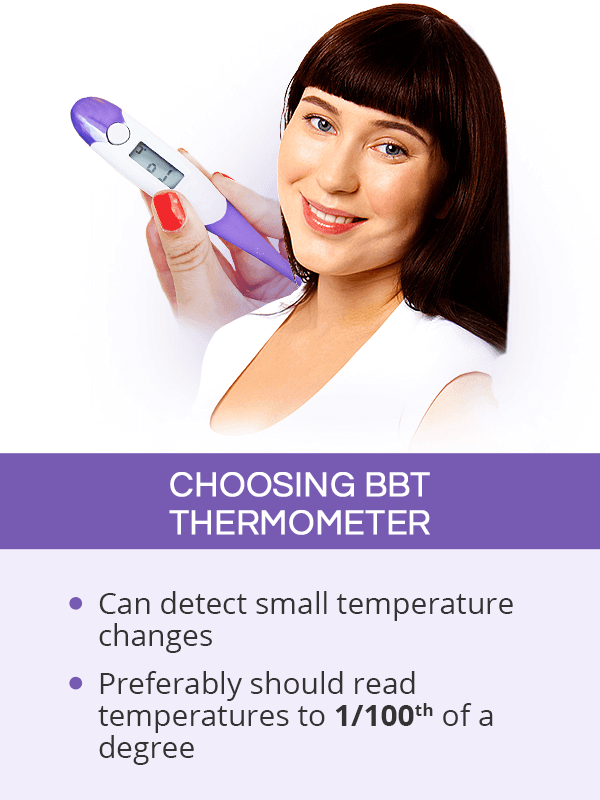
The most important feature of an ovulation thermometer is that it can detect small temperature changes.
For a thermometer to be appropriate for measuring BBT, it is best if it can read to 1/100th of a degree (up to two decimal points, e.g. 97.67 °F).
However, a woman is able to get accurate results with a decent-quality thermometer that reads BBT shifts to the tenth degree (up to one decimal point, e.g. 97.6 °F).
There are a wide variety of basal body temperature thermometers available in most pharmacies or online, which can vary in price and the features they offer:
Glass BBT thermometers: Most basic form; Might be difficult to read the temperature if taken early in the morning; A mercury-free version is recommended; Cost $10 or less.
Digital BBT thermometers: Most come with a lit-up display screen for easier readings; Produce a beeping sound when measurement is taken; Cost $15 - $25, plus the cost of battery replacements.
Specialty BBT thermometers: Many can store several weeks' worth of temperatures; Measure BBT in shorter time; Can be compatible with ovulation trackers; Cost $25 - $60, plus the cost of battery replacements.
It is recommended to stick to one type of thermometer to avoid any discrepancies in measurements.
Keeping a BBT Chart
Because the shifts in temperature are small, their patterns can only be studied when they are recorded over the span of at least three or four menstrual cycles.
A basal body temperature chart can be downloaded or made by hand. Many of the online or mobile-based ovulation trackers are equipped with it, too.
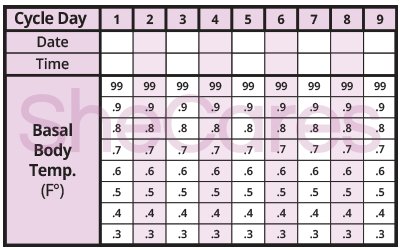
In its basic form, a BBT chart should consist of the following divisions:
X-axis: Menstrual cycle days
Y-axis: Basal body temperature range
Time of the measurement
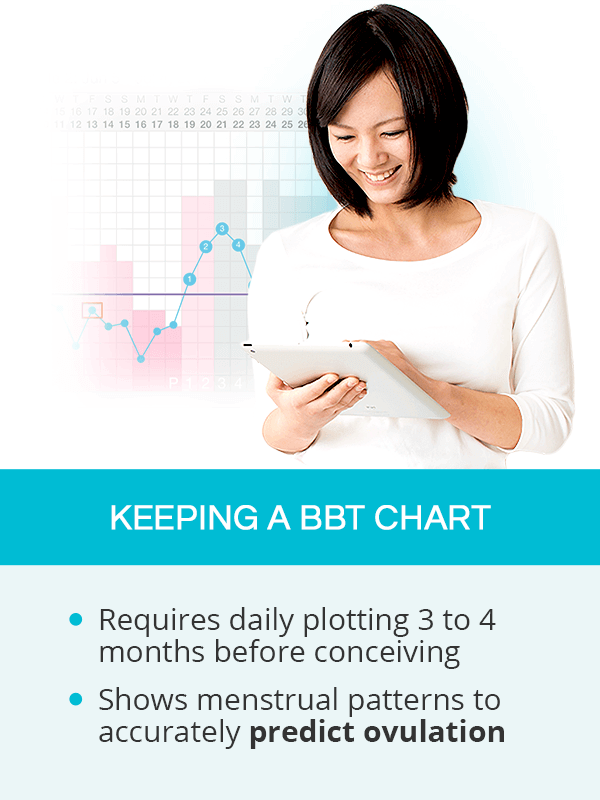
Additional features might include boxes to note other ovulation signs, such as the consistency of cervical mucus, or whether a couple had intercourse on a given day.
Once a temperature is measured, it should be located on the Y-axis and plotted on the correct day of the cycle as a dot or an X. One sheet should be used per menstrual cycle. At the end of which, a woman can connect the dots to better visualize the patterns of the temperature changes, thus estimating ovulation.
Conclusions
Measuring BBT with an appropriate basal body temperature thermometer is one of the most common and cost-effective methods of estimating ovulation. It is especially effective if practiced in combination with other self-assessment ovulation tests, such as checking cervical mucus or cervical position. Once a woman has a good idea of when she ovulates, she can use ovulation test kits or microscopes to confirm it in order to plan her conception efforts more precisely.
It is important to remember that there are a number of factors that might affect BBT, including ongoing infections, prolonged stress, disturbed sleep patterns, or certain medications. Maintaining a BBT chart can help women view the ovulatory cycles at a whole and help them optimize their fertility.
Sources
- Case Western Reserve University. (n.d.). Basal Body Temperature Method. Retrieved August 3, 2018 from https://students.case.edu/wellness/info/contraception/basalbodytemp.html
- Fertility and Sterility. (1981). Some properties of rectum and vagina as sites for basal body temperature measurements. Retrieved August 3, 2018 from https://www.ncbi.nlm.nih.gov/pubmed/7202755
- Mayo Clinic. (2018). Basal body temperature for natural family planning. Retrieved August 3, 2018 from https://www.mayoclinic.org/tests-procedures/basal-body-temperature/about/pac-20393026
- Medline Plus. (2018). Pregnancy – identifying fertile days. Retrieved August 3, 2018 from https://medlineplus.gov/ency/article/007015.htm
- Office on Women's Health. (2010). Basal Body Temperature Chart. Retrieved August 3, 2018 from https://ehr.wrshealth.com/live/shared/practice-documents/2037472/2047_basal-temperature-chart.pdf
- Planned Parenthood. (n.d.). What is the Temperature Method? Retrieved August 3, 2018 from https://www.plannedparenthood.org/learn/birth-control/fertility-awareness/whats-temperature-method-fams
- The Children's Hospital at Montefiore. (2017). Basal Body Temperature (BBT) Charting. Retrieved August 3, 2018 from http://www.cham.org/health-library/article?id=hw202058
- The Ohio State University. (2014). Basal Body Temperature. Retrieved August 3, 2018 from https://patienteducation.osumc.edu/Documents/basal-body-temp.pdf
